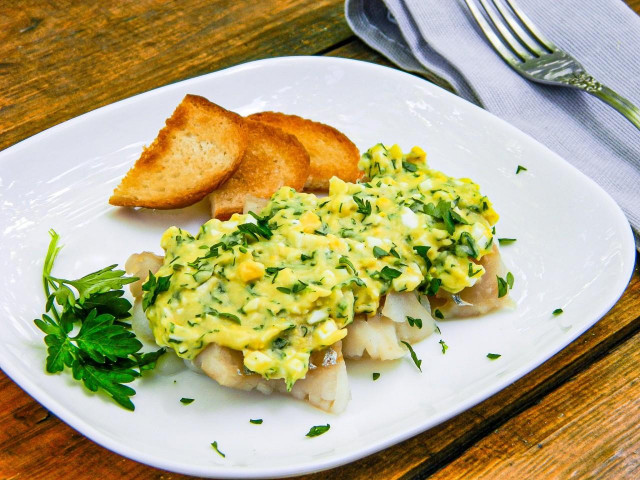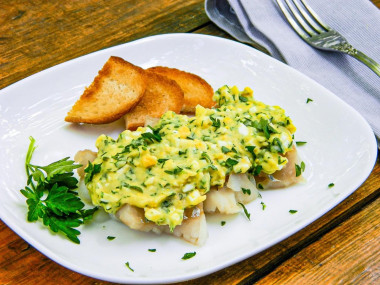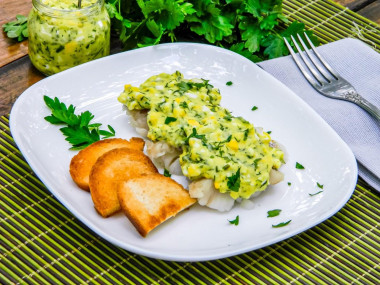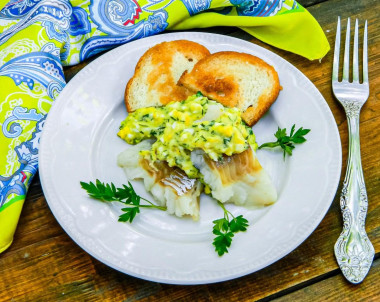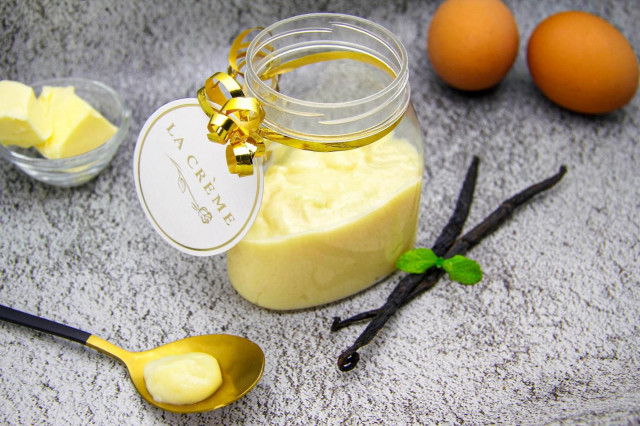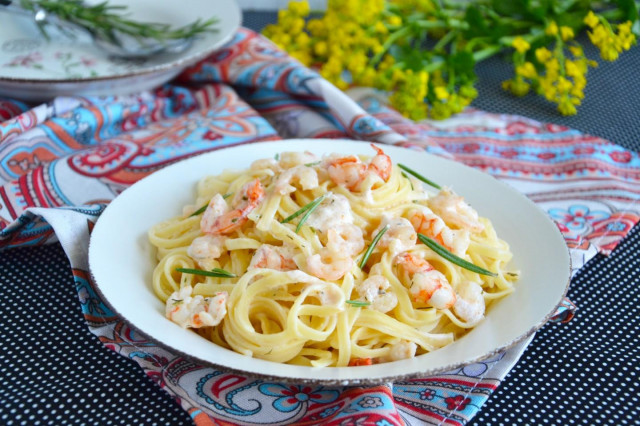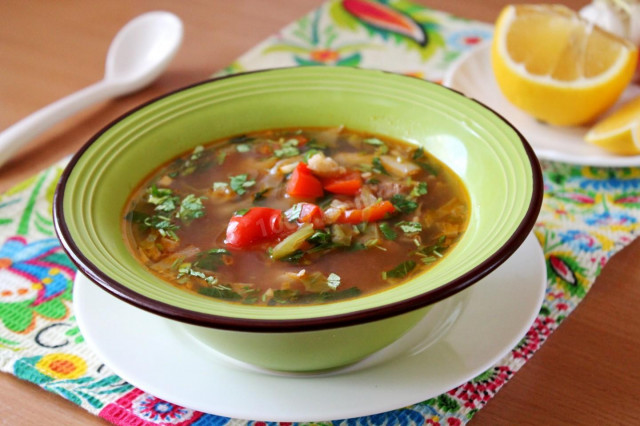Composition / ingredients
Step-by-step cooking
Step 1:

How to make fish in Polish? Prepare the products. Eggs will fit medium-sized. Parsley and dill are suitable for greens. I take their combination. Take fish with white meat, for example, pike, cod and others. I'm going to cook pollock fillets. If the fish is frozen, it must be thawed beforehand so that the fish is properly cooked and does not lose its taste qualities. 8-10 hours before cooking, transfer the fish to the refrigerator.
Step 2:
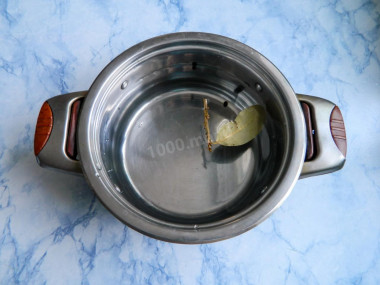
Start with the fish. To prepare the broth, take a saucepan with a volume of at least 3 liters. Pour water into it, add bay leaves, pepper and a little salt. Bring to a boil over high heat.
Step 3:
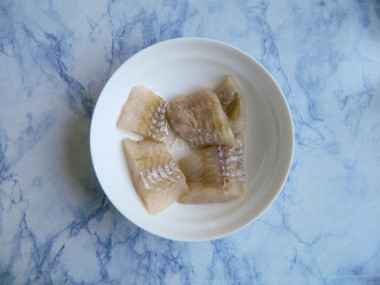
While the water is boiling, prepare the fish. If you have a ready-made fillet, rinse it thoroughly under running water and dry it by blotting the surface with paper towels. Cut into portions, 3-4 cm wide each, so that it is convenient to serve to the table.
Step 4:
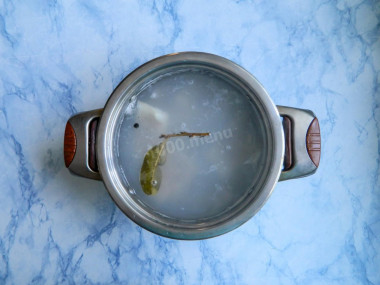
When the water boils, gently lower the pieces of fish into the pan. Bring to a boil, and cook for 3 minutes over medium heat.
Step 5:
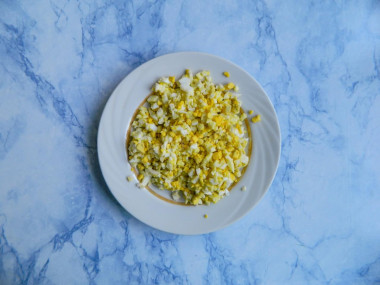
Wash the eggs with soap and cook them cool. To do this, pour them with cold water and cook for 18 minutes after boiling over medium heat. To clean the boiled eggs well, fill them with cold water. Cool completely. Chop the peeled eggs with a knife or grate them on a coarse grater. This slicing of eggs will make the sauce more homogeneous.
Step 6:
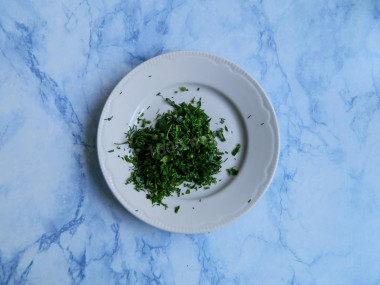
Remove the flaccid leaves from the greens, rinse and dry. Chop with a knife. The smaller the greens are, the neater the sauce will look.
Step 7:

Remove the pan from the heat. Remove the cooked fish from the water. You will still need the broth to make the sauce.
Step 8:

Prepare the sauce. To do this, you will need a saucepan or frying pan. Melt the butter over medium heat.
Step 9:
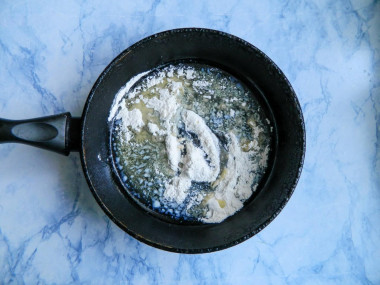
Immediately sift the flour to the butter. It is necessary to sift in order to remove small debris and so that the flour does not gather in lumps. Start immediately and stir constantly until a uniform mass is obtained.
Step 10:
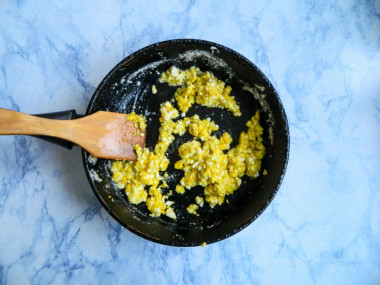
Add the chopped eggs. Fry, stirring constantly.
Step 11:

Add a ladle of fish broth, stir until smooth. Adding a little broth and stirring, achieve the desired consistency. The sauce should not be thick and not liquid. Type a little on a spoon and turn it over, the sauce should slowly drain from it.
Step 12:
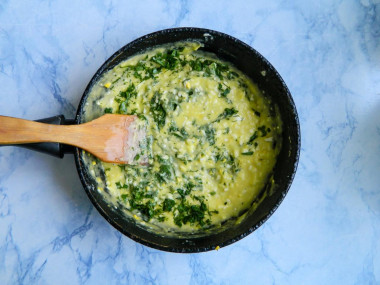
Remove from heat, add chopped herbs to the sauce and mix well. Pour the prepared sauce over the fish and serve it to the table.
I'm not sure if the Poles consider this dish their own. However, in the Soviet Union, such fish was known and cooked.
According to the classic recipe, any white fish can be used in any form - boiled, fried, and even steamed.
To taste, the fish in Polish turns out to be tender, light under a rather dense egg-cream sauce. A good combination that will add variety to the daily menu.
How to choose the perfect pot for soup, porridge or pickling cucumbers read the article about pots.
How to properly cut a whole fish into fillets? Remove the tail, head and fins. Cut the carcass along the spine to the spine. Turn it on its side. With a sharp knife, cut the meat from the backbone bone. Turn the carcass over and cut the fillet from the other side. Clean the inside by removing the black film, as it is bitter and will spoil the taste. Rinse and be sure to dry well.
Since the degree of salinity, sweetness, bitterness, sharpness, acid, burning is individual for everyone, always add spices, spices and seasonings, focusing on your taste! If you put some of the seasonings for the first time, then keep in mind that there are spices that it is especially important not to shift (for example, chili pepper).
Caloric content of the products possible in the composition of the dish
- Bay leaf - 313 kcal/100g
- Butter 82% - 734 kcal/100g
- Amateur unsalted butter - 709 kcal/100g
- Unsalted peasant butter - 661 kcal/100g
- Peasant salted butter - 652 kcal/100g
- Melted butter - 869 kcal/100g
- Black pepper peas - 255 kcal/100g
- Salt - 0 kcal/100g
- Water - 0 kcal/100g
- Lemon juice - 16 kcal/100g
- Wheat flour - 325 kcal/100g
- Fresh frozen soup greens in a package - 41 kcal/100g
- Greenery - 41 kcal/100g
- Chicken egg - 80 kcal/100g
- Pollock fillet - 72 kcal/100g

